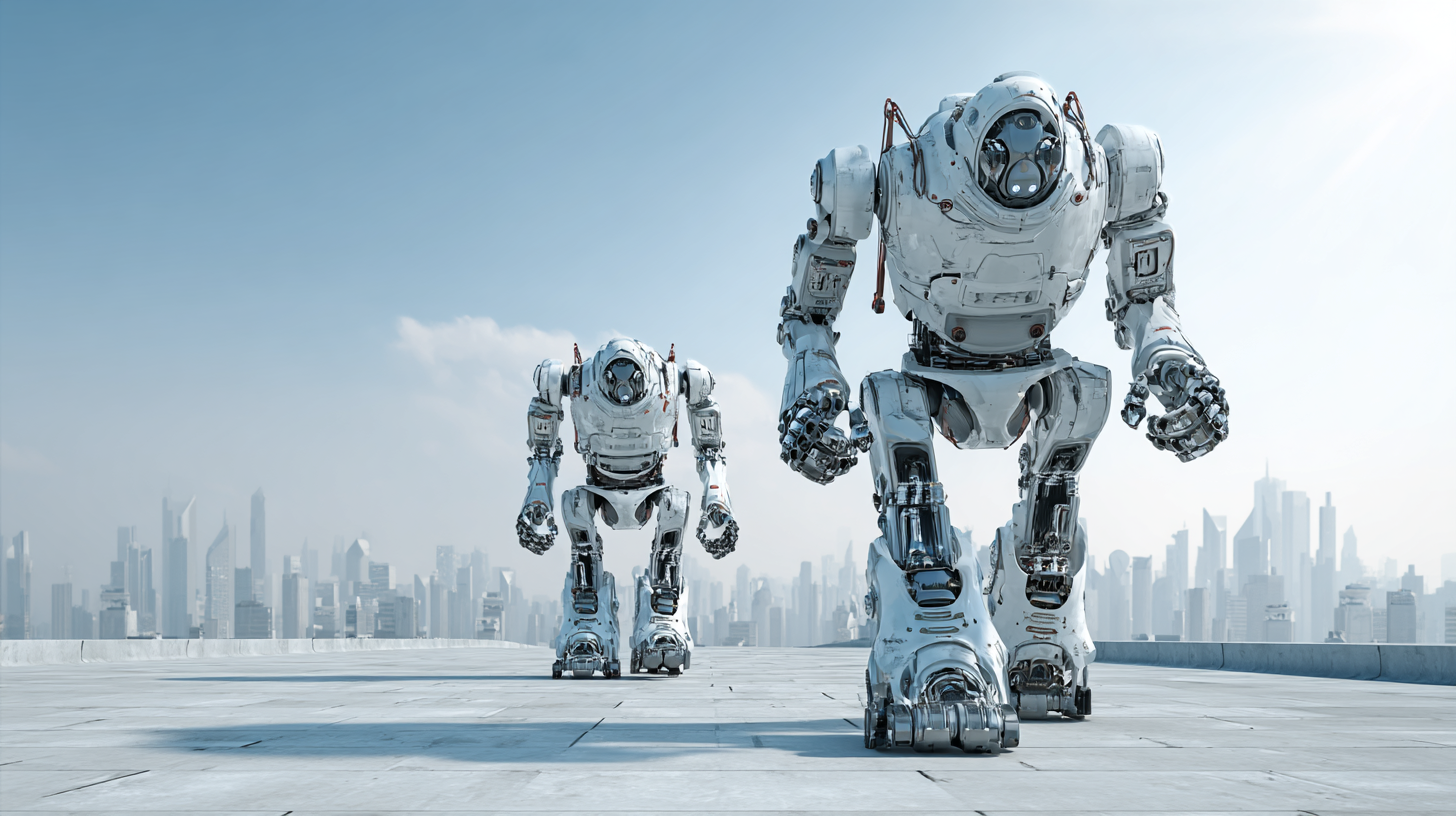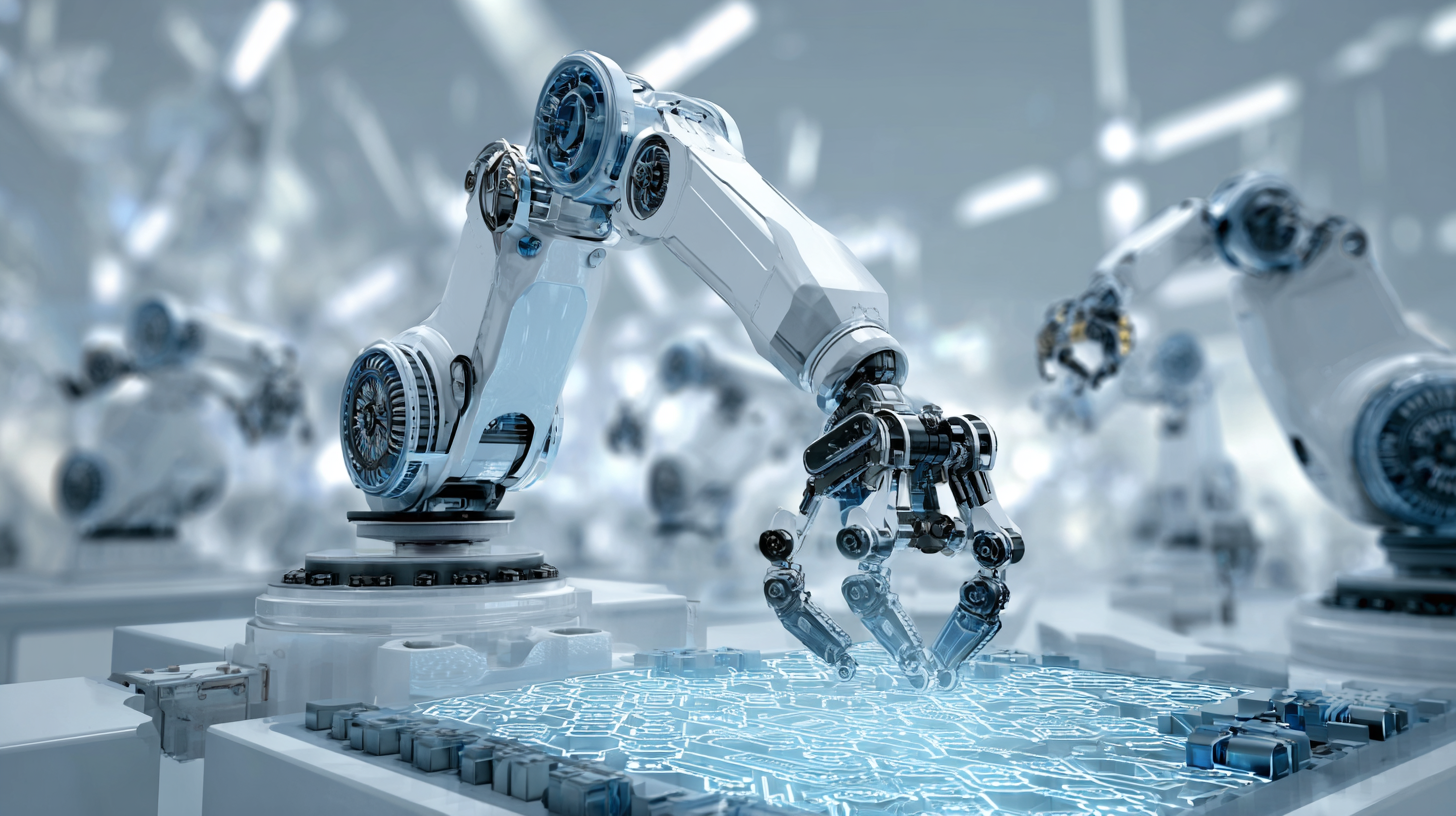

14, Raghava Enclave, Transport Road, Secunderabad, Hyderabad (500009)
©2024 All Rights Reserved by excitechrobot.com
As industries continue to evolve in the face of rapid technological advancements, Autonomous Robots have emerged as a pivotal element in driving efficiency and innovation across various sectors. According to a report by the International Federation of Robotics (IFR), the global stock of operational robots is expected to reach nearly 4 million units by 2025, reflecting a robust annual growth of over 20%. This surge is indicative of the increasing reliance on autonomous solutions to streamline processes, enhance productivity, and reduce operational costs.

From manufacturing and logistics to healthcare and agriculture, the applications of Autonomous Robots are vast and varied, showcasing their unique features such as precision, adaptability, and the ability to operate in hazardous environments. As China solidifies its position as a manufacturing powerhouse, the export of these advanced robotic systems is set to play a crucial role in the global market, further establishing the country as a leader in innovation and technology.
The evolution of autonomous robots has been a remarkable journey, marked by significant advancements in technology and applications. From their early inception in the 1950s with simple automated machines to the sophisticated systems we see today, autonomous robots have transformed numerous industries. According to a report by MarketsandMarkets, the global robotics market is projected to reach $210.3 billion by 2025, with autonomous robots playing a crucial role in this growth due to their ability to perform tasks with minimal human intervention.
Historically, the development of autonomous robots can be divided into several key phases. The 1980s and 1990s saw the introduction of industrial robots in manufacturing, which automated repetitive tasks and improved efficiency. With advancements in artificial intelligence and machine learning in the 21st century, robots began to move beyond manufacturing into sectors like healthcare, logistics, and agriculture. A study by the International Federation of Robotics projects that by 2023, the number of operational industrial robots will exceed 3 million worldwide, highlighting the widespread acceptance and integration of autonomous technologies across various domains. As we continue to explore the capabilities of these robots, their applications are set to expand, driving further innovation and transforming the landscape of industries.
Autonomous robots are revolutionizing industries with their unique features that enhance efficiency and safety. According to a recent report by Gartner, the global market for autonomous mobile robots is projected to reach $40 billion by 2025, reflecting a compound annual growth rate of 25%. One key feature that sets the best autonomous robots apart is their advanced sensing capabilities. Equipped with LIDAR, cameras, and ultrasonic sensors, these robots can navigate complex environments, avoid obstacles, and operate in dynamic conditions without human intervention. For instance, in warehouse settings, companies like Amazon leverage autonomous robots for inventory management, significantly reducing the time taken for stock retrieval and minimizing human errors.
Another distinctive attribute is the integration of artificial intelligence and machine learning algorithms, which enable robots to learn from their environments and improve their task execution over time. A study by McKinsey highlights that such intelligent automation could increase productivity in various sectors by up to 30%. In agriculture, autonomous drones equipped with AI can monitor crop health, delivering precise data to farmers, thus optimizing yield and resource utilization. These capabilities not only streamline operations but also open new avenues for innovation across multiple sectors, from manufacturing to logistics and beyond.
| Robot Type | Key Features | Applications | Industry |
|---|---|---|---|
| Autonomous Mobile Robot (AMR) | Obstacle avoidance, real-time mapping, dynamic path planning | Warehouse logistics, material handling | Manufacturing |
| Automated Guided Vehicle (AGV) | Guided by tracks, payload management, frequent rerouting | Assembly line transport, product delivery | Automotive |
| Drones | GPS-enabled flying, real-time data collection, remote operation | Aerial surveys, package delivery, search and rescue | Logistics |
| Service Robot | AI-driven interaction, autonomous navigation, task automation | Customer service, hotel assistance, healthcare support | Hospitality |
| Inspection Robot | High-definition imaging, environmental sensing, autonomous mapping | Infrastructure inspection, monitoring pipelines | Construction |
As industries adopt automation at unprecedented rates, autonomous robots emerge as game-changers, revolutionizing business operations across diverse sectors. In manufacturing, robots equipped with advanced sensors and AI algorithms streamline production processes. They perform repetitive tasks with high precision, reducing human error and increasing efficiency. Furthermore, predictive maintenance capabilities of these robots allow companies to anticipate and address equipment failures, minimizing downtime and boosting productivity.
In the logistics sector, autonomous delivery robots and drones are innovating supply chain management. With the ability to navigate independently, these robots optimize delivery routes, reduce transit times, and enhance overall customer satisfaction. Retail environments benefit as well, where shelf-scanning robots monitor inventory levels in real-time, ensuring shelves are stocked efficiently and improving the shopping experience for consumers. From exploring new frontiers in healthcare with surgical robots to enhancing agricultural practices through autonomous farming machines, the tailored applications of robotics offer a glimpse into a future where automation supports and enhances human efforts across industries.
This bar chart illustrates the percentage of companies within various industries that have implemented autonomous robots to enhance their operations. The manufacturing sector leads with 78%, followed by healthcare at 65%, agriculture at 55%, logistics at 70%, and construction at 60%.
The rapid advancement of autonomous robot technology has introduced a plethora of unique features and applications across various industries. However, this progress is not without its challenges. Key issues include ensuring reliable navigation in dynamic environments, integrating artificial intelligence for improved decision-making, and addressing safety concerns to protect both humans and machines. Innovators are working tirelessly to overcome these hurdles, focusing on the development of more sophisticated sensors and algorithms that enhance situational awareness.

Tips for overcoming these challenges include investing in robust training programs for operators, prioritizing user-friendly interfaces, and fostering collaboration between tech developers and end-users. By emphasizing continuous feedback and iteration, teams can refine their autonomous solutions to better meet real-world demands. Furthermore, integrating multi-functionality in robots can optimize their performance across different tasks, making them more versatile and efficient.
Innovation is also essential in addressing regulatory and ethical issues surrounding autonomous robots. Companies should stay abreast of evolving regulations and actively engage in discussions about safety standards. Promoting transparency in decision-making processes and ensuring accountability will help gain public trust in these technologies. Embracing these strategies can pave the way for a smoother transition into a future where autonomous robots play a pivotal role across industries.
The landscape of autonomous robots is rapidly evolving across various industries, driven by advancements in artificial intelligence, machine learning, and sensor technologies. According to a report by Fortune Business Insights, the global autonomous robotics market is projected to reach approximately $83.59 billion by 2027, growing at a compound annual growth rate (CAGR) of 25.4% from 2020. This surge reflects a growing adoption of autonomous systems in sectors such as manufacturing, logistics, and healthcare, where efficiency and precision are paramount.
Future trends indicate that autonomous robots will not only become more versatile but also increasingly integrated into existing workflows. A study by Deloitte highlights that 62% of executives expect to adopt advanced automation technologies within the next two years. Innovations such as collaborative robots (cobots) that work alongside human operators and autonomous drones for inventory management are paving the way for greater operational efficiency. Furthermore, with the advent of 5G technology, the connectivity of these robots will enhance their capabilities, enabling real-time data sharing and improved decision-making, ensuring they remain at the forefront of industry transformation.

